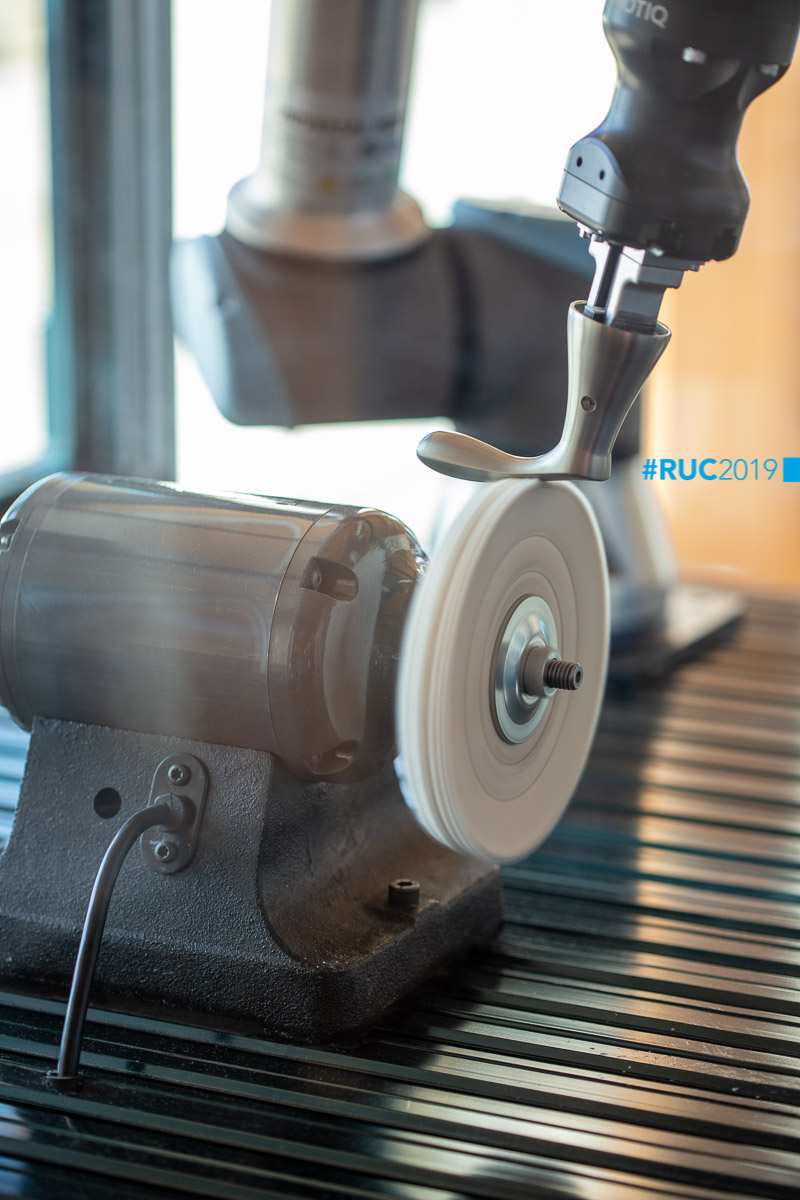How Have Robotics Evolved Since 2007?

As Robotiq prepares for RoboBusiness 2015, it's a good time to consider some of the major changes in the world of robotics that have taken place since 2007, the year we first attended a Robotics Trends event.
Remember 2007? Apple launched the iPhone, Guitar Player was the hottest video game in town, and Netscape finally departed this mortal digital realm.
Robots appeared to be on the brink of mainstream popularity.
Bill Gates captured the zeitgeist with his famous "A Robot In Every Home" article for Scientific American, in which he likened the state of the robotics industry in 2007 to that of the IT industry in 1977 --one on the brink of ubiquity.
It's a comparison that been repeated many times since, and yet "a robot in every home" (or indeed factory) hasn't come to pass, despite the considerable and exciting levels of growth the industry has seen over the past eight years.
A degree of hardware inertia is partly responsible and many robotics platforms and some technologies need more time to mature.
Nevertheless, as you survey some of the developments in the robotics landscape from 2007-2015 with us, we think you will come to the same conclusion we do: that robotics is more widely appreciated and mainstream than ever before and that the industry's most exciting years are likely to be the decade that lies ahead.
If this amounts to a reformulation of Gate's optimism, then so be it.
After all, eight whole years have passed since Gates' article was first published.
Note: We couldn't possibly hope to capture every single development that has occurred in robotics since 2007 in one short synopsis, but we've tried to pick out some of those we believe to be the most noteworthy. We also included a timeline of Robotiq's development over the same time frame to give you a sense of our journey. If you have any additions or suggestions, please let us know in the comments.
2007
Robot Operating System (ROS), a set of frameworks for robot software development, is launched. While the industry is still not close to achieving software standardization, ROS marks an important and noteworthy step in that direction.Willow Garage, creators of the PR2 robot research platform, is a new kid on the block, having been established in 2006.
Industrial robot arm manufacturer Universal Robots was just two years old.
Around 110,000 industrial robots are shipped worldwide.
The DARPA Urban Challenge is held in California. This is the first event at which autonomous vehicles interact with both manned and unmanned vehicle traffic in an urban environment.
Finally, in 2007 Robotiq was just an idea. Today, there are hundreds of robot hands and sensors being used worldwide.
2008
The first pictures of the PR2's robot arm are released:

Photo: The PR2's Alpha gripper Source: Willow Garage blog.
The industrial robotics industry collapses with the automotive. In the middle of this turmoil, Robotiq is founded on Canada Day (July 1st), 2008.
2010
IT giant Microsoft releases the Kinect (Kinect Timeline), bringing affordable motion sensing input devices to robot developers. This is one key event that nobody had seen coming in the robotics industry and that had a massive impact on vision-guided robotics research.
Robotiq starts selling its 3-Finger Adaptive Gripper. The first customers are in the defense sector. The color of first industrial robot to host an Adaptive Gripper is... red! A project manager at Comau sits beside Robotiq's President in a plane and sets up afterward a proof of concept project of a machinery manufacturer.
2011
IBM's Watson wins the Jeopardy! Gameshow.
2012
Rethink Robotic's collaborative industrial robot Baxter is released and the dream of human-robot collaboration without safety barriers between both parties comes a little closer.
The U.S. State of Nevada passes a law permitting the operation of autonomous cars. Google's Self-Driving Car is among the first to be tested.
The DARPA Robotics Challenge (successor to the DARPA Grand Challenge), takes place for the first time.
Amazon acquires warehouse robot firm KIVA for $775m in what is arguably the acquisition that really wakes people up to the scale, importance, and potential of the burgeoning robotics industry.
Robotiq starts selling its 2nd product in the industrial sector.
2013
In another sign of the rapid growth of the industry --and the amount of investment money flowing-- Robo-Stox launches on the NASDAQ, becoming the first benchmark index to track the global robotics and automation market.
China becomes the largest industrial robot market in the world, accounting for 20% of the total global supply. Between 2008 and 2013, the total supply of industrial robots increased by about 36% per year on average in China. By 2013 that number jumped to more than 178,000.
DARPA holds the second round of the Robotics Challenge. Japanese Schaft wins first place. 4 of the top 8 teams, including Schaft, use 3-Finger Adaptive Gripper from Robotiq.
Google acquires several robotics companies, including humanoid robot developer Meka and robot arm manufacturer Redwood Robotics.
Stryker acquires Mako Surgical for approximately $1.65bn.
IBM announces a $1bn investment in a new business unit built around Watson.
Willow Garage closes; its robotics know-how moves to various Silicon Valley companies.
Robotiq releases Kinetiq Teaching --which allows welders to easily program robots-- with Yaskawa Motoman.
2014
Google acquires:
- Nest, with VP of Technology, Yoky Matsuoka
- DeepMind, a UK based AI company
- UAV manufacturer Titan Aerospace
Surprisingly, Microsoft shuts down its robotics group.
Robotiq releases the FT150 Force-Torque sensor.
2015
Teradyne acquires Universal Robots for $285m. Omron acquires Adept for $200m.
As mandated by the 2012 Federal Aviation Administration Modernization and Reform Act the FAA finalizes its efforts to integrate unmanned aerial systems into U.S. civilian airspace.
Robotiq sponsors the Manufacturing Forum at RoboBusiness. It's been a fascinating journey for us, for our customers, and for everyone involved in the robotics industry. We're certainly looking forward to the years ahead.
Speaking of the years ahead, what can we expect to see?
Well first off: startup fever. A multitude of new startups, buoyed by cheaper components and the overall confidence of the industry will emerge. Here you'll find 235 startups reviewed by the always interesting Frank Tobe.
The impact of strategic alliances will also be important. Apple's relationship with Foxconn is probably the one to watch --not just for its scale and potential economic impact-- but because China looks set to be the first country to experience dramatic workforce upheavals as the result of automation. Important to watch how this plays out for the development of the industry elsewhere.
Foxconn also has alliances with Google, CMU, and SoftBank. Softbank with Fetch. And Toyota, MIT and Stanford have big plans in the autonomous vehicle space.
Will we see new and surprising technologies from large-scale manufacturers enter the robotics ecosystem, speeding up its development?
A Final Thought
If there is one thing lacking in the robotics space, it's the presence of a Steve Jobs-type figure: one that galvanizes the public and generates huge consumer and media excitement. The Steve Jobs of robotics has not yet arrived.
Indeed, the Bill Gates of robotics has not arrived yet either.
But while we wait for that to happen, we can look forward to new startups, to JIBO, to Pepper reaching North America, to the continued rise of drones, continued improvements in industrial robotics, improved human-robot collaboration capabilities and –if the last eight years are anything to go by-- a whole host of new technologies and developments that we cannot even envisage in September 2015.







Leave a comment